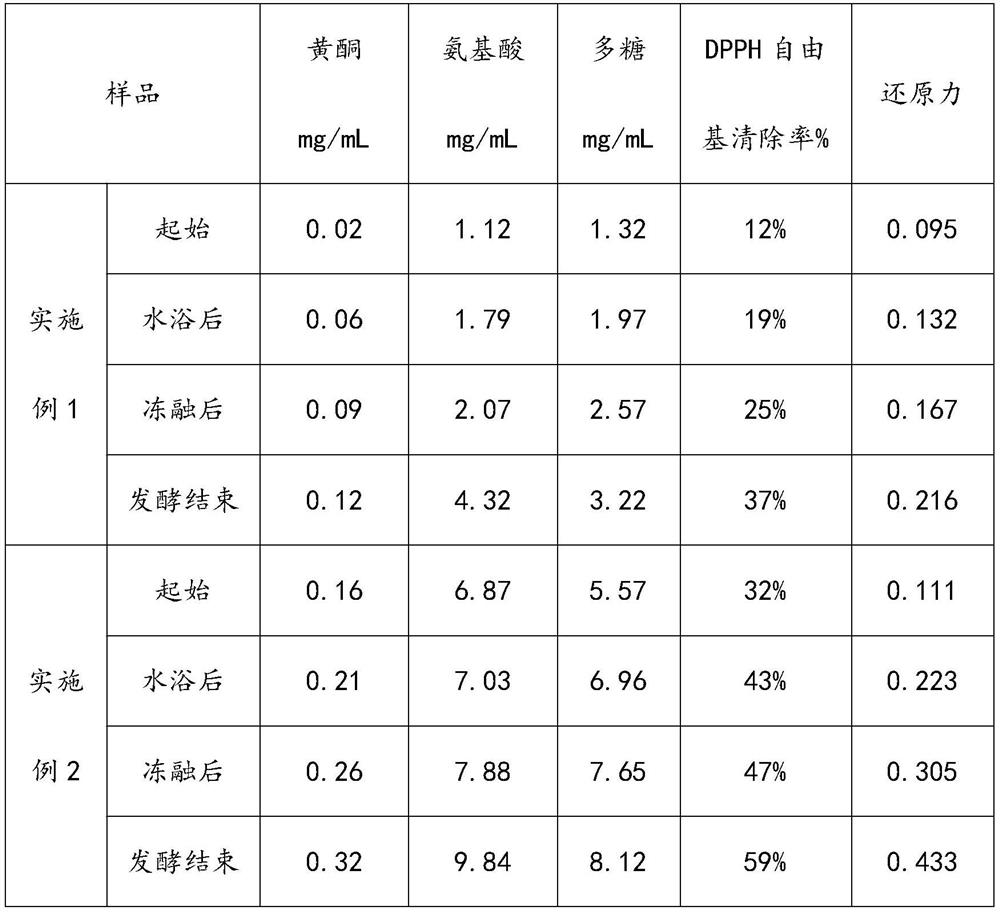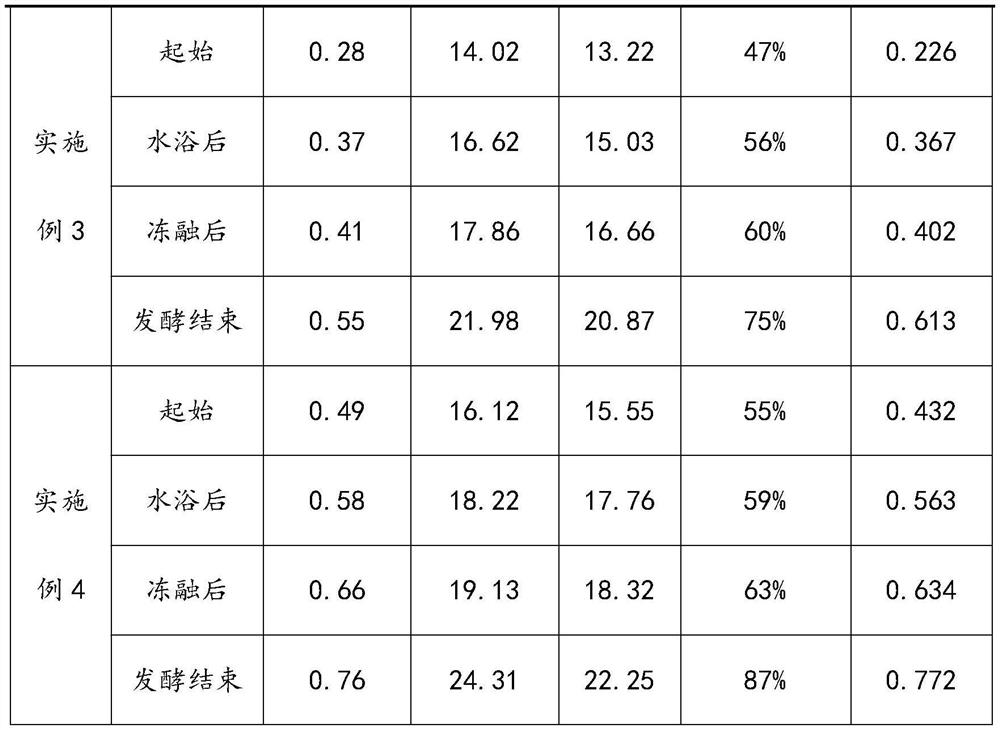A method and application of low-temperature bath treatment rose to prepare ecological nutrient solution
An ecological nutrient solution and low-temperature technology, applied in skin care preparations, pharmaceutical formulas, and cosmetic preparations, etc., can solve the problems of limited research on rose ecological nutrient solution, achieve mild sterilization methods, improve anti-inflammatory sterilization, and delay Effects of skin aging
- Summary
- Abstract
- Description
- Claims
- Application Information
AI Technical Summary
Problems solved by technology
Method used
Image
Examples
Embodiment 1
[0027] 1) Preparation of fermentation medium:
[0028] Freshly opened rose petals were picked and freeze-dried and crushed to obtain 100-mesh rose powder; 80°C deionized water was added to the fermentation bottle, 0.05 wt% black tea of the quality of the fermentation system was added, and soaked for 20 minutes; 1wt% honey, 0.01wt% citric acid, 0.005wt% ascorbic acid (Vc), stir until completely dissolved, add 0.1wt% rose powder of fermentation system quality, stir evenly, 4-6 ℃ low temperature water bath for 12h. Freeze at -20°C for 16 hours, take it out, thaw at room temperature, repeat this freeze-thaw process once; add 0.2wt% glucose of the quality of the fermentation system, heat to 68-70°C in a water bath, and maintain this temperature for 30min, quickly place in 4- 5°C refrigerator rapidly cools the fermentation substrate.
[0029] 2) Preparation of fermentation agent:
[0030] Diatomaceous earth and water were made into diatom mud at a ratio of 25:100 (w:v), and afte...
Embodiment 2
[0036] 1) Preparation of fermentation medium:
[0037] Freshly picked rose petals are freeze-dried and crushed to obtain 100-mesh rose powder. Add 80°C deionized water into the fermentation bottle, add 0.1 wt% black tea with the quality of the fermentation system, and soak for 20 minutes. Add 2wt% honey, 0.05wt% citric acid, and 0.01wt% ascorbic acid (Vc) of the quality of the fermentation system to the tea water, stir until completely dissolved, then add 1wt% rose powder of the quality of the fermentation system, stir evenly, 4-6°C Low temperature water bath for 12h. Freeze at -20°C for 24 hours, take it out, thaw at room temperature, and repeat this freeze-thaw process once. Add 0.2wt% glucose of the fermentation system quality, heat to 68-70°C in a water bath, and keep this temperature for 30 minutes, and quickly place it in a refrigerator at 4-5°C to cool the fermentation substrate rapidly.
[0038] 2) Preparation of fermentation agent:
[0039] First, diatomite and wa...
Embodiment 3
[0044] 1) Preparation of fermentation medium:
[0045]Freshly picked rose petals are freeze-dried and crushed to obtain 200-mesh rose powder. Add 80°C deionized water into the fermentation bottle, add 0.2 wt% black tea with the quality of the fermentation system, and soak for 20 minutes. Add 3wt% honey, 0.1wt% citric acid, and 0.01wt% ascorbic acid (Vc) of the quality of the fermentation system to the tea, stir until completely dissolved, then add 3wt% rose powder of the quality of the fermentation system, stir evenly, 4-6°C Low temperature water bath for 16h. Freeze at -20°C for 20 hours, take it out, thaw at room temperature, repeat this freeze-thaw process once, add 0.2wt% glucose of the fermentation system quality, heat to 68-70°C in a water bath, and maintain this temperature for 30min, quickly place in 4- 5°C refrigerator rapidly cools the fermentation substrate.
[0046] 2) Preparation of fermentation agent:
[0047] First, diatomite and water are made into diatom m...
PUM
 Login to view more
Login to view more Abstract
Description
Claims
Application Information
 Login to view more
Login to view more - R&D Engineer
- R&D Manager
- IP Professional
- Industry Leading Data Capabilities
- Powerful AI technology
- Patent DNA Extraction
Browse by: Latest US Patents, China's latest patents, Technical Efficacy Thesaurus, Application Domain, Technology Topic.
© 2024 PatSnap. All rights reserved.Legal|Privacy policy|Modern Slavery Act Transparency Statement|Sitemap



